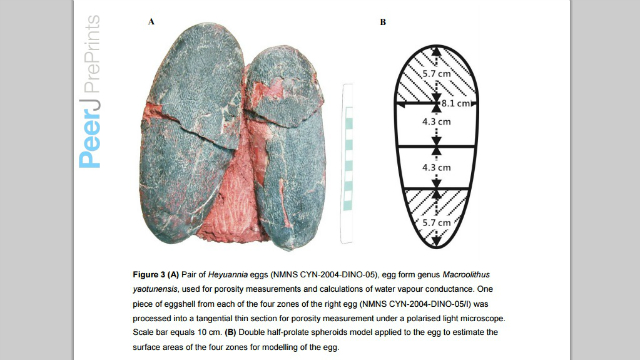Filtered By: Scitech
SciTech
Dinosaur eggs were vibrantly colorful, new research shows
By BEA MONTENEGRO, GMA News

A new study shows that dinosaur eggs might actually have been blue-green instead of the dull brown or gray we usually imagine and see depicted in movies.
The study, which has yet to be published in a peer-reviewed journal, is available online at PeerJ Preprints. In it, a team of scientists from the University of Bonn in Germany, found that two pigments that provide color for modern-day bird eggshells also existed in the eggshells of the dinosaur Heyuannia huangi.
According to the researchers, protoporphyrin (PP) and biliverdin (BV) are the pigments that color chicken eggs reddish brown and the eggs of robins and emus blue. They also noted that the color of the eggshell also depends on the type of nest that birds usually have—birds with open nests use specific colors to camouflage their eggs.
The eggshell fossils (which are 66 million years old) are presumed to have been laid in partially open nests by Heyuannia huangi. Their blue-green color camouflaged the egg, and according to the researchers, hinted that Heyuannia huangi could have taken care of their young more than their fellow dinosaurs.
“Shell porosity measurements, preserved clutches and parental animals support an open nesting behaviour for oviraptorid dinosaurs,” the study said.
This isn’t the first time that our perception of prehistoric life has become more colorful: in 2010, Sinosauropteryx became the first dinosaur to have its color officially scientifically confirmed.
According to a paper published in Nature, Sinosauropteryx had melanosomes—molecules that contained pigments—for both reddish-orange and whitish-gray in their primitive feathers. — TJD, GMA News
More Videos
Most Popular



